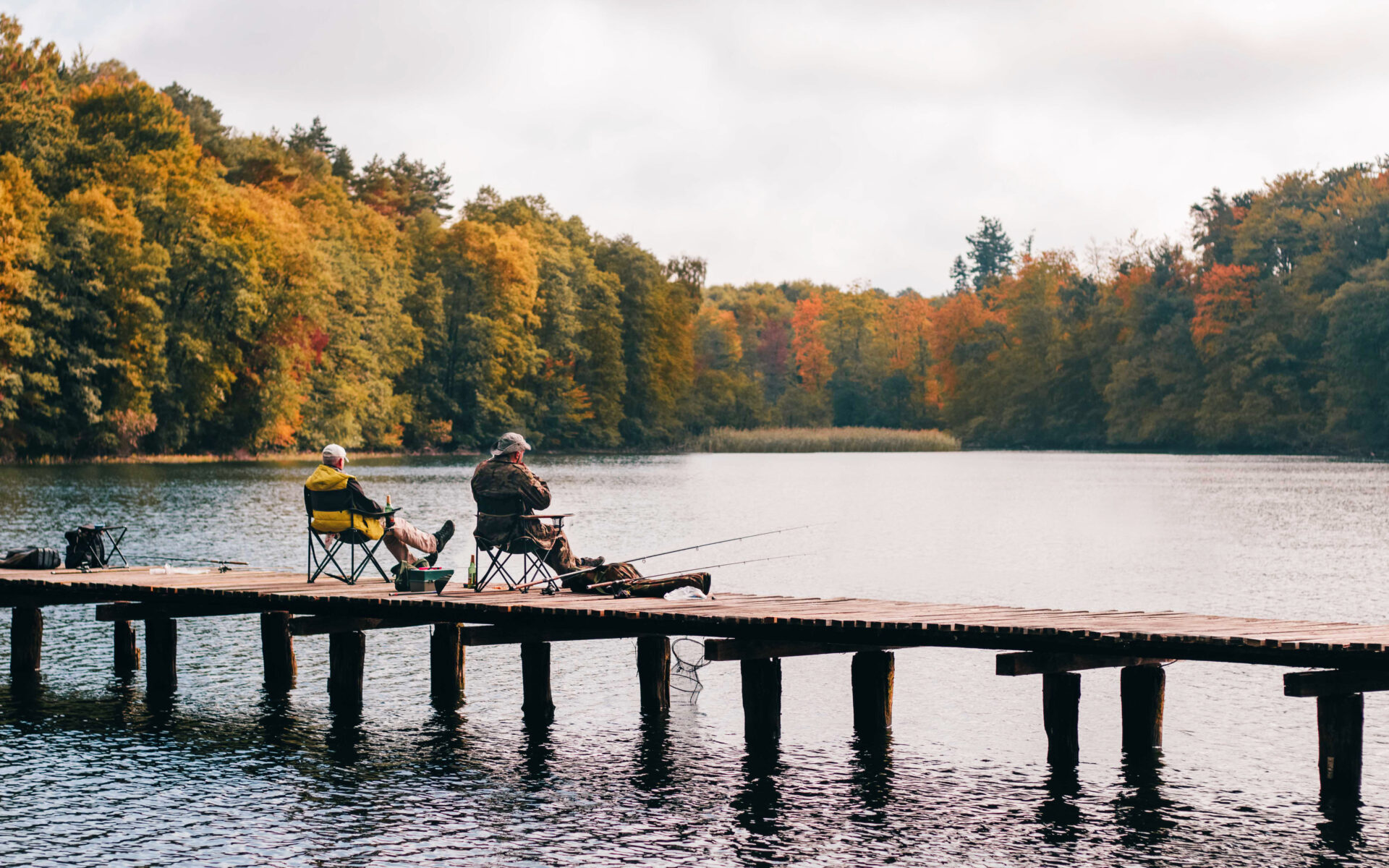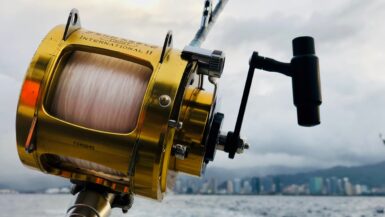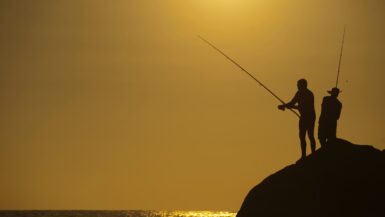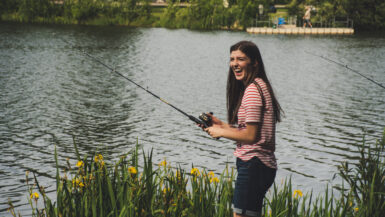Fishing for rainbow trout in freshwater is an exciting pastime and a great way to enjoy the outdoors. Whether you’re a beginner or an experienced angler, rainbow trout provide a great opportunity to learn and hone your angling skills. This article will provide tips and techniques for catching rainbow trout in a freshwater environment, so you can make the most of your time out on the water. With the right strategies, you can make the most out of your fishing trips and come away with a successful haul.
Where to Find Rainbow Trout
Rainbow trout are widely distributed throughout fresh water bodies in the United States. Lakes, rivers, streams and ponds can all be productive for catching rainbow trout. Popular lakes and rivers in the West Coast states like California, Washington and Oregon are known to have high populations of rainbow trout. In the East Coast, states such as New York, Pennsylvania, and Michigan also have large number of rainbow trout in bodies of water like lakes and rivers. It’s best to look for bodies of water that have a current, like a creek or a river, for the most optimal rainbow trout fishing. Current helps create areas of slack water, where it’s easiest to catch rainbow trout.
Best Times of Year for Rainbow Trout Fishing
The best times to fish for rainbow trout vary depending on the region. In the West Coast, late May to early September tends to be the best season for rainbow trout fishing. In the East Coast, the season runs from April to September. Generally, the best time of day to find rainbow trout is in the morning or the evening, when the trout tend to be most active. Different seasons also bring about different types of baits, presentations and techniques, so keep in mind the time of year when you’re planning a fishing trip.
Techniques for Catching Rainbow Trout
The most common technique for catching rainbow trout is bait fishing. Live bait, such as worms and insects, are great for enticing rainbow trout. You can also use artificial lures, like spinners and spoons, or a combination of both. Fly-fishing is also an effective technique for catching rainbow trout. To get the best results, use the right kind of rod, reel and line for the size of the fish you’re targeting. When fly-fishing, it’s important to choose the right pattern of fly.
Using the Right Gear and Equipment
When fishing for rainbow trout, it’s important to have the right gear and equipment. A light to medium action rod with a 5-6 pound test line is a good choice. A reel with a smooth drag system is also important, so you can land the fish without any problems. You should also bring a selection of different hooks and lures that are designed for catching rainbow trout. It’s important to use sharp hooks and to have a selection of different colors of lures so you can target different types of rainbow trout. Additionally, you should bring a net, a pair of needle nose pliers and some bait for the day.
Safety Tips for Fishing for Rainbow Trout
It’s important to take safety precautions when fishing for rainbow trout as well. Always wear a life jacket when fishing from a boat, and always obey the rules and regulations of the body of water you’re fishing in. Additionally, make sure to always follow the fish and game laws of the area, and to take proper care of the fish you catch. When handling the fish, don’t put your fingers in its gill, and always use a wet cloth or gloves when handling the fish. Finally, make sure to properly dispose of any garbage and any unused bait.
Gear and Equipment
Fishing for rainbow trout in freshwater requires specialised gear and equipment in order to be successful. Whether you are a beginner or an experienced angler, it is important to ensure you have the necessary pieces of equipment to make your fishing trip successful. Here is a guide to the essential gear and equipment you will need when fishing for rainbow trout in freshwater:
Fishing Rod
A good quality fishing rod is essential when fishing for rainbow trout. They are designed to work with a variety of lures and baits. Choose a rod that is light and flexible, as these are better suited for trout fishing. There are also rods specifically designed for trout fishing, although these can be more expensive than regular rods.
Reels
The reel is the piece of equipment which allows you to control the line and reel in the trout when they take the bait. There are a variety of reels available, but the most popular are spinning reels and baitcaster reels. The type of reel you choose should depend on your individual preference and fishing style.
Lines and Leaders
When selecting a line for trout fishing, it is important to consider two things: the strength of the line and the visibility of the line in the water. For trout fishing, use a line that is approximately 6 to 8 pounds in strength. Also, use a clear or low visibility line, as this will ensure that the trout are less likely to be put off by the line. Leaders are also important when fishing for trout, and these should be around 6 to 12 inches long.
Lures and Baits
Lures and baits are essential for successful trout fishing. The type of bait or lure you choose should depend largely on the type of water you are fishing in. Most anglers use either natural bait such as worms, or artificial lures such as spinners or crankbaits. Whichever type of bait or lure you use, the most important thing is to ensure that it is the right size for the type of trout you are targeting.
Other Essentials
Other essential items you may need to bring with you when fishing for rainbow trout include a landing net, a set of forceps or hemostats, a fish stringer or livewell, and a tackle box. Having these items can make all the difference when it comes to catching, or not catching, a rainbow trout.
With the right gear and equipment, you can be sure that your fishing trip for rainbow trout in freshwater will be a success. Be sure to practice the techniques discussed here, and you will be sure to have some great luck and plenty of fun.
Bait Options
Rainbow trout are a popular target species for freshwater anglers, and catching them requires the right bait. What lure or bait you use when fishing for rainbow trout in freshwater will depend in part on the season and the terrain of the water you are fishing. Some of the best baits for rainbow trout include spinners, spoons, small crankbaits, and scented or textured soft baits.
Spinners
Spinners are one of the most popular baits for trout, and they come in a variety of shapes, sizes, and colors. Spinners are typically made from a metal blade and a treble hook, and are often adorned with beads, blades, and other flash elements. Spinning reels, like the classic Mepps Aglia, are a great choice for rainbow trout. They create vibration and flash when the blade rotates, which is a great way to attract the trout.
Spoons
Spoons are a great choice for trout fishing, and they come in different shapes, sizes, and finishes. Spoon baits should be used with a slow, jigging technique, which will create a fluttering action that will draw in the trout. A #2 or #4 flutter spoon is a good choice for rainbow trout.
Crankbaits
Small-sized crankbaits can be an effective bait for rainbow trout. A tight wiggling motion is key to enticing the trout, and will help increase the chance of hooking a trout. Crankbaits come in a variety of sizes, shapes, and colors, so choose one that is appropriate for the season and terrain.
Soft Baits
Soft baits, like worms and other artificial baits, can be an effective choice when fishing for rainbow trout. Soft baits come in many shapes, sizes, and colors, and can be scented and textured to enhance their attractiveness to the trout. The scent and texture will help the bait stand out and draw in the trout. When using soft baits, use a combination of twitches and pauses to keep the bait near the bottom, and entice the trout to take the bait.
Time of Day
When fishing for rainbow trout, timing can be an important factor. It’s generally best to fish early in the morning or late in the evening, when the sun is low and the trout are most active. Paying attention to the time of day can increase your chances of success when fishing for rainbow trout.
Techniques for Catching Rainbow Trout
Rainbow Trout are found throughout North America, with the majority of their population concentrated in the western regions of Canada and the United States. Generally, Rainbow Trout prefer cold, clean, oxygen-rich freshwater habitats, such as lakes, rivers, and streams. They may also be found in brackish areas near estuaries.
Bait Selection for Rainbow Trout Fishing
When fishing for Rainbow Trout, anglers have a variety of bait choices to choose from. Live bait such as nightcrawlers, leeches, and small minnows are a favorite of anglers targeting Rainbow Trout. Artificial lures such as spinners, spoons, jigs, and flies can also be incredibly effective when targeting Rainbow Trout.
Techniques for Catching Rainbow Trout
When fishing for Rainbow Trout, anglers should try to use the most natural presentation of their bait as possible. This means that the bait should move along with the current, instead of being held in one spot. Slow retrieves with small twitches of the rod are also productive when fishing for Trout.
For artificial lures, it is best to target specific areas such as weed beds and drop-offs. Anglers should experiment with different depths, retrieves, and retrieves to determine what works best on a particular day. Utilizing scent-based attractants and long leaders can be beneficial when using artificial lures as well.
Best Times to Fish for Rainbow Trout
Rainbow Trout tend to be most active during times of low light, such as sunrise and sunset. These are also the times when the trout will feed the most actively, so anglers should take advantage of these periods in order to increase their chances of success.
In the summertime, the best times to fish for Rainbow Trout is during the early morning and late evening hours. In the winter months, the best times to fish for Rainbow Trout is during the middle of the day. It is important for anglers to adjust their fishing times according to the seasonal patterns of their particular trout population.
Essential Gear for Trout Fishing
When fishing for Rainbow Trout, the following items are essential: a rod and reel combination suitable for the size and species of Rainbow Trout, a selection of baits and lures appropriate for the species, and a variety of terminal tackle such as hooks, swivels, and line.
In addition to the basics, anglers should also consider investing in a pair of polarized sunglasses and trout net. Both of these items will help anglers see and land their catches more easily.
Conclusion
Fishing for Rainbow Trout can be an incredibly rewarding activity for anglers of all levels. By understanding the habitat, bait selection, and techniques used to catch Rainbow Trout, anglers can greatly increase their chances of success. The right gear, the correct timing, and a bit of patience are all essential elements to successful Rainbow Trout fishing.
Handling and Releasing Fish
Fishing for rainbow trout in freshwater requires the right equipment and tackle for success. Basic fishing gear for rainbow trout includes a rod and reel, fishing line, a variety of lures, and hooks. A spinning rod is usually the ideal choice for trout fishing because the light spinning action is ideal for casting lures and baits. Fishing line should be strong enough to handle the fight of a trout and should be tied securely to the reel. Lures should be chosen based on the type of trout fishing desired, from bottom dwellers to top water surface swimmers. Hooks should be sized accordingly to the type of bait used, with smaller hooks for insect imitations and larger hooks for larger baits such as worms.
Techniques for Fishing Rainbow Trout
Rainbow trout can be fished in a variety of ways depending on the desired results and the type of water available. Bank fishing is a popular technique in which anglers cast their lines from the shore or a dock in order to catch trout. There are also techniques such as trolling and fly fishing, both of which require different specialized equipment. Trolling allows an angler to cover a larger area of water in order to locate where the trout are congregating. Fly fishing is a method of angling that requires the use of specially constructed rods and lures designed to imitate a trout’s natural food source.
Handling & Releasing Rainbow Trout
When it comes to handling and releasing rainbow trout, it is important to use caution. Trout should not be handled by squeezing or grabbing them, as this can cause the fish to die or become wounded. Upon catching a trout, an angler should use wet hands or nets to lift the fish out of the water and remove the hook. After the hook is safely removed, the trout should be gently returned to the water, making sure that the fish is fully submerged before releasing it. If a fisherman intends to keep the trout for eating, it should be killed as soon as possible and iced down for freshness.
Gaining the Right Equipment
Fishing for rainbow trout can be a fun and rewarding adventure but requires the right equipment, skills, and some luck. A light spinning rod and reel outfit with 6-8 pound test line is best for rainbow trout. Using baits such as spinners, worms, and a variety of lures like crankbaits and jerkbaits as well as natural food sources like insects make them easy to catch. If a fishing lure is used, make sure to choose one that is the right color, size, and shape. Techniques such as tight-lining, trolling, and bottom bouncing should be used to target rainbow trout. Finally, having patience and the right attitude can go a long way in fishing for rainbow trout in freshwater. With the right tools and the right mindset, success can be found in fishing for rainbow trout in freshwater.





Leave a reply